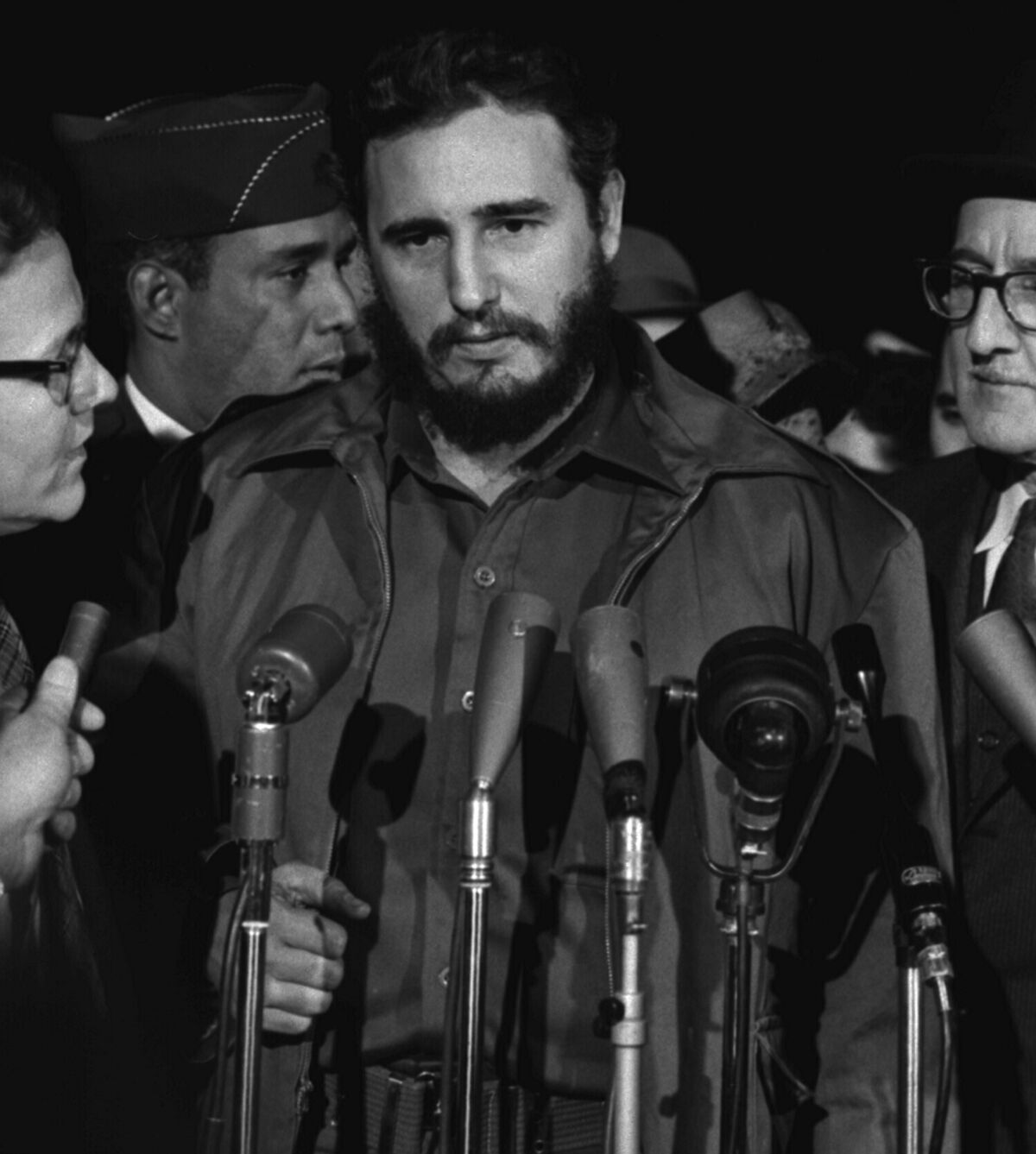The island of Cuba won its political independence from Spain in 1902. Due to its political situation, the Cuban economy depended heavily on the United States.
Fulgencio Batista took power by force in March 1952 and established a dictatorship. Batista’s government, which favoured American interests, was recognized by the United States.
Cuba’s economic situation was difficult and its politics were marked by corruption. Under the Batista regime, Cuba became a holiday destination for Americans, where prostitution, arms dealing, casinos and money laundering were rife.
Soon there was opposition to the regime established by Batista. Organized around Fidel Castro, this opposition tried to attack a barracks in Santiago in 1953. The attack failed. However Fidel Castro used his trial to promote his ideas.

Fidel Castro in 1959
Batista organized presidential elections on November 1, 1954, during which he was elected. Because this election was legal, it deflated some of the opposition’s arguments.
After his arrest, Castro fled to Mexico, where he organized the opposition movement. On December 2, 1956, Castro and 81 allies landed on the island of Cuba.
On March 13, 1957, this group attempted to attack the presidential government. The goal was to assassinate Batista. The failure of this operation led to severe repression but did not provoke any reaction from the United States. Castro continued his fight against the Batista regime from Santiago.
His cause became famous throughout the world. Castro was supported by a young revolutionary, Ernesto Guevara, nicknamed ‘Che.’
Batista and the Americans present in Cuba fled when the revolutionary group succeeded in taking the city of Santa Clara on Christmas 1958. On January 8, 1959, Fidel Castro entered Havana and established a new Cuban state.
In reaction to Castro’s seizure of power and new regime, the United States initiated a blockade against Cuba, which then had to seek out a new ally in the USSR. The alliance between Cuba and the USSR led to the missile crisis. The American embargo caused further radicalization in the Castro regime.
Castro’s first move was to nationalize Cuban resources and transportation to prevent them from being controlled by foreign powers. Castro also introduced various measures: free rent, agriculture reform, revolutionary tribunals, the death penalty, etc.
Land thus became state property. The size of farmlands was also regulated by a law intended to eliminate operators that were too large and farms that were too small to be profitable. The new president wanted to implement better wealth distribution through these decisions. Then in 1961, the Cuban regime became a communist regime.
The nationalization of Cuba continued. In August 1960, Cuba expropriated and nationalized all foreign companies. It did the same to the banks in September. Next, Cuba nationalized its tobacco and sugar production.
The revolutionary regime did not allow any opposition. There were more than 600 executions in its first year. Moreover, the police under the new regime arrested 20 000 political prisoners during the 1960s. The United States tried to provoke a counter-revolution on a number of occasions. The Cuban people supported Castro’s regime every time.
The Castro regime wanted a more important position in international politics, especially in relation to third-world countries. This is why Castro supported guerrilla wars in Latin America. In 1964, Cuba also asserted its right to support revolutionary movements that arose in countries that had supported Cuban aggression.
On July 9, 1960, Cuba seized all North American companies operating on its soil and aligned itself with its new ally, the USSR. The two countries exchanged raw materials: Cuba traded sugar for the USSR’s oil. Cuba launched a foreign political offensive in 1965 that violated peaceful coexistence agreements. Cuban forces were also omnipresent in Africa in 1965, attempting to rally all nations.
The collapse of the USSR in 1991 caused a serious economic crisis in Cuba, changing the country’s economy and its customs. This left the country heavily in debt.